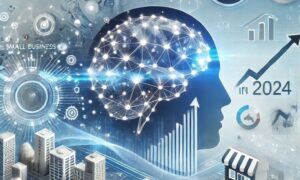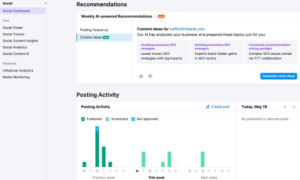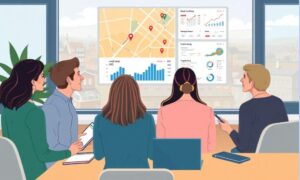Virtual reality and augmented reality are not just buzzwords anymore – they are revolutionizing the way we learn and interact with information. From immersive field trips to interactive simulations, these cutting-edge technologies are transforming education as we know it. In this blog post, we will explore the incredible impact of virtual reality and augmented reality in education, and how they are shaping the future of learning for students everywhere. Get ready to step into a whole new world of possibilities!
Introduction to Virtual Reality (VR) and Augmented Reality (AR)
Virtual reality (VR) and augmented reality (AR) are two innovative technologies that are gaining popularity in various industries. Both VR and AR involve the use of computer-generated simulations to create a virtual world for an individual, but they have distinct differences in terms of functionality, usage, and impact.
Virtual reality is a fully immersive experience that uses headsets or goggles to transport users into a completely simulated environment. Through the use of high-quality graphics and motion sensors, users can interact with this digital world as if it were real. It gives individuals the feeling of being present in a different place and time while still physically being in their own surroundings. On the other hand, augmented reality is an overlay of computer-generated elements onto the user’s real-world environment. The most common form of AR is through mobile devices such as smartphones or tablets, which use cameras to capture the real world and superimpose digital information on top of it.
The Rise of VR and AR in Education
Virtual Reality (VR) and Augmented Reality (AR) technologies have been gaining a lot of attention in recent years, especially in the field of education. These emerging technologies offer immersive and interactive learning experiences, revolutionizing the traditional methods of teaching and learning.
One of the main reasons for the rise of VR and AR in education is their ability to create a more engaging and stimulating environment for students. With VR, students can experience simulated scenarios that would otherwise be impossible to witness in real life. For example, medical students can practice surgical procedures without having to step into an actual operating room or history students can virtually visit ancient civilizations and witness historic events.
Similarly, AR adds another layer of interactivity to traditional classroom settings. By overlaying digital content onto the physical world through smartphones or tablets, AR brings textbooks to life, making learning more visually appealing and memorable. This technology also allows teachers to use 3D models to explain complex concepts in STEM subjects, making it easier for students to understand abstract ideas.
Moreover, VR and AR provide personalized learning experiences by catering to different learning styles. Students who learn best through hands-on activities can benefit from these technologies as they offer a more practical approach than traditional lectures. Additionally, with customizable features such as language options or adjustable difficulty levels, these technologies support individualized instruction that caters to each student’s needs.
Another advantage of using VR and AR in education is their ability to facilitate collaborative learning experiences. Through virtual simulations or group projects using AR tools like Google Expeditions, students from different geographical locations can work together on projects or participate in role-playing activities. This not only enhances teamwork skills but also exposes them to diverse perspectives and cultures.
Furthermore, VR and AR offer cost-effective solutions for educational institutions as they eliminate the need for expensive equipment or field trips while maintaining high-quality educational experiences. They also provide opportunities for inclusive education by accommodating learners with disabilities who face challenges in participating in conventional classrooms.
Benefits of Using VR and AR in the Classroom
Virtual Reality (VR) and Augmented Reality (AR) have revolutionized the way education is delivered in classrooms. These immersive and interactive technologies provide a unique learning experience for students, making lessons more engaging, interesting, and effective. Let’s take a closer look at the various benefits of using VR and AR in the classroom.
1. Enhanced Student Engagement:
One of the significant advantages of incorporating VR and AR into classroom activities is increased student engagement. Traditional methods like reading from textbooks or listening to lectures can be monotonous for students, leading to disinterest and distraction. However, with VR and AR, students are transported to a virtual world where they can actively participate in their own learning process. This hands-on approach makes learning more fun and exciting, resulting in improved attention span and retention of information.
2. Real-World Simulations:
With VR technology, students can experience real-world simulations that would otherwise be impossible to create in a classroom setting. For example, history lessons can come to life as students walk through virtual ancient cities or witness historical events unfold before their eyes. Similarly, science classes can include virtual experiments where students can safely handle dangerous substances without any risk.
3. Multi-Sensory Learning:
Traditional forms of teaching often rely on visuals like pictures or videos to supplement textbook content. But with VR and AR, students get multi-sensory learning experiences by seeing, hearing, feeling, interacting with 3D objects within the virtual environment they are immersed in. This type of multi-sensory learning has proven to be highly effective as it caters to different learning styles.
4. Personalized Learning:
One size doesn’t fit all when it comes to education; every student learns differently at their own pace. With VR and AR technology integrated into classrooms, teachers have the ability to customize lesson plans according to individual needs or preferences easily. This personalized approach ensures that each student gets an equal opportunity for academic success.
5. Promotes Critical Thinking and Problem-Solving Skills:
VR and AR require students to think critically and solve problems while they are immersed in the virtual environment. This type of hands-on learning encourages students to think outside the box, analyze situations, and make decisions that can have consequences within the virtual world. As a result, students develop crucial problem-solving skills that are essential for their academic and personal growth.
Real-Life Examples of VR and AR Integration in Education
Virtual Reality (VR) and Augmented Reality (AR) have been making a significant impact on various industries, including education. These immersive technologies provide students with a unique learning experience that goes beyond traditional methods. In this section, we will discuss some real-life examples of VR and AR integration in education, highlighting their benefits and potential.
1. Medical Education
VR and AR technologies have proven to be valuable tools in medical education, where students can practice surgical procedures in a safe virtual environment without risking the lives of real patients. For instance, the University of Nebraska Medical Center uses VR simulations to train students on complex surgeries and emergency situations. This allows for better retention of knowledge as well as more hands-on experience.
2. Language Learning
With VR technology, language learners can immerse themselves in realistic environments where they are required to communicate using their target language. This provides a more engaging approach compared to traditional classroom teaching methods. One prime example is Google Translate’s AR feature, which translates text from one language to another through the lens of your phone’s camera.
3. Historical Sites Exploration
Through VR technology, students can visit famous historical sites or events without leaving their classrooms physically. This allows them to interact with these places and get a better understanding of past events or cultures virtually. The Anne Frank House Museum has implemented this by creating an interactive 3D tour that takes viewers through the secret annex where Anne Frank hid during World War II.
4. Simulations for Science Experiments
With AR technology, science teachers can create simulations for experiments that are otherwise impossible or dangerous to conduct in a classroom setting. For instance, Labster offers virtual lab simulations that allow students to experiment with chemicals without any risk involved.
5.Co-Creation Projects
Using VR technology, students from different locations can collaborate on projects together virtually- making it easier to share ideas and work towards common goals while having access to resources regardless of their location. This method has been used by schools like the Wissenschaftliche Hochschule Lahr (WHL) in Germany to conduct conferences and workshops, providing a more inclusive learning experience.
Challenges and Limitations of VR and AR in Education
The use of virtual reality (VR) and augmented reality (AR) in education has sparked excitement and potential for transforming the traditional methods of teaching. However, like any emerging technology, there are challenges and limitations that must be considered.
One major challenge is the high cost of implementing VR and AR technology in schools. This includes not only the devices themselves but also the software, maintenance, and training for teachers. Many schools struggle with tight budgets and may not have the resources to invest in this technology.
Another limitation is access to VR and AR devices. Unlike traditional textbooks or computers, VR headsets and AR glasses are not easily accessible or affordable for students to use at home. This can create inequality among students who do not have equal access to these tools outside of school.
Additionally, there is a lack of available educational content specifically designed for VR and AR platforms. While there are some programs and applications tailored towards education, they may still be limited in scope or quality compared to more traditional forms of learning materials.
Moreover, incorporating VR and AR into curriculum requires significant planning and preparation from teachers. They must understand how to effectively integrate this technology into their lessons while still meeting educational standards. This may require additional training or professional development opportunities for educators.
One concern many have about using VR and AR in education is the potential negative impact on real-world experiences. The immersive nature of these technologies can sometimes disconnect students from actual physical environments, hindering social interactions and practical skills development.
One crucial aspect that cannot be ignored is the risk involved in exposing students to technical glitches or bugs during a lesson using VR/AR technology. As with any electronic device, there is always a chance of malfunctioning which could disrupt a lesson plan or lead to frustration among students.
Future Potential of VR and AR in Education
Virtual Reality (VR) and Augmented Reality (AR) have become hot topics in the education world, and for good reason. These immersive technologies have the potential to transform how students learn and interact with information, creating a more engaging and dynamic learning environment. As VR and AR continue to advance and become more accessible, their impact on education is only expected to grow.
One of the main benefits of VR and AR in education is their ability to create highly realistic simulations. This means that students can experience hands-on learning in a safe, virtual environment without any risk or harm. For example, medical students can practice complex surgeries using VR technology, allowing them to make mistakes without consequences before working on real patients.
These simulations also offer a level of interactivity that traditional methods of teaching cannot match. Students are able to actively engage with the content rather than passively consuming it through lectures or textbooks. This makes the learning process more immersive and enjoyable for students as they explore new concepts in a way that feels like a game or adventure.
Beyond simulations, VR and AR have also shown potential in bridging the gap between abstract concepts and real-world applications. With these technologies, students can visualize complex scientific theories or historical events in ways that were previously impossible. This has been particularly effective for visual learners who struggle with traditional teaching methods.
Additionally, VR and AR allow for personalized learning experiences tailored to each student’s needs. Educators can create individualized lessons based on a student’s specific interests or learning style by using data collected from their interactions within these virtual environments. This not only enhances student engagement but also helps them retain information better.
Another important aspect of VR and AR in education is accessibility. These technologies open up opportunities for distance learning as well as accommodating those with physical disabilities that may hinder traditional classroom participation. With just an internet connection, students from all over the world can access quality education through shared virtual experiences.
As we look towards the future, the potential of VR and AR in education is limitless. These technologies will continue to evolve and become more advanced, providing opportunities for new learning experiences. With ongoing developments, it is possible that VR and AR could supplement or even replace traditional classroom instruction entirely.
Conclusion
In conclusion, the integration of virtual reality and augmented reality in education has brought about significant improvements in teaching and learning methods. These technologies provide an immersive and interactive experience that engages students in a way traditional methods cannot. They create a more inclusive learning environment where students can explore, experiment, and retain information better. As technology continues to advance, we can expect even greater impacts from these emerging technologies on the education system, shaping the future of how we learn. It is clear that virtual reality and augmented reality are here to stay and will continue to revolutionize education for years to come.



































